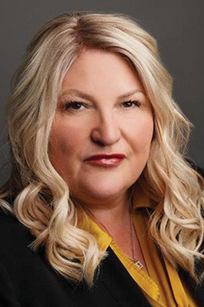Feature / Inflection point
Like the rest of the health service, the past two years have been difficult for NHS Supply Chain, with Covid-19 having a significant impact on its operation. But it is now looking to the immediate future, implementing a new strategy to meet its NHS customers’ needs.
Colin McCready, chief finance officer of the NHS England-owned supplies and logistics organisation, believes it is time to review the direction of the business. ‘Given the past two years, it’s a really good time to treat this as a point of inflection and say: “Actually, what needs to change? How do we need to do things differently to deliver what our partners, our customers need from us going forward?”,’ he says.
As well as demand pressures, trusts must address backlog waiting lists, cope with inflation, and return to cost efficiency and productivity measures not seen since the beginning of the pandemic.
The new strategy will be key to addressing these pressures, as Supply Chain simplifies its processes and looks at what needs to change to deliver the needs of its partners and customers.
‘Based on the key performance indicators, we are doing a good job around increasing our market share and delivering savings. That’s really important, but the NHS has different priorities right now. The NHS and the world have changed, and we need to deliver a broader range of services and focus on what our customers need from us.
‘We recognise that what we deliver is relatively simple, but we do it in a relatively quite complex way. We need to make ourselves easy to do business with. This is particularly important for customers because the more time they spend trying to work their way around our complexities, the less time they can devote to delivering frontline care.’
New market, new approach
Mr McCready adds that Supply Chain is planning for a more challenging market. ‘We will go about things differently. It’s not just about driving prices down, it’s about looking for different solutions that will get better outcomes. But we’ll need to procure differently. We need to buy smart, we need to supply right, and we need to partner expertly.’
Data analysis will play a major role in the new Supply Chain operation, he continues.
‘We collect a huge amount of data, but we don’t extract enough value from it. We need to become much more data insight driven in our decision-making, in our interactions with the system, to help our customers to make better decisions, more informed decisions around what’s likely to be happening and therefore where they can deliver savings, where they can do things differently.’
Tailoring its target operating model to deliver the new, broader, objectives will be the next step. Implementation is due to begin this autumn, with completion due by the end of 2025. The emphasis will be on simpler processes, collaboration and sharing information, as well as supporting trusts as they face the effects of inflation.
Streamlining priorities
Previously, Supply Chain had 11 category towers for goods and services, such as for infection control and wound care, large diagnostic capital equipment, and hotel services. These have been streamlined into eight categories, with three of these brought in-house, together with the expertise to buy the required products, in terms of quality and getting clinicians what they need.
‘We’re bringing in-house categories where we’ve got really strong market share, or we believe we’re better placed to have the expertise and the knowledge in-house, and we can make efficiencies,’ Mr McCready says. ‘We are re-procuring the ones we want to outsource too.’
One of the three to be brought in-house – diagnostic and capital equipment – was moved in-house on 1 July, earlier than planned, to accelerate the implementation of the NHS Supply Chain operating model. This will enable greater control, to connect the activities around the sourcing of products with the needs of clinicians in this complex area, as well as improve opportunities to deliver more value to the NHS.
PPE role
Personal protective equipment (PPE) – which was set up as a standalone procurement function during the Covid-19 pandemic – will also be brought in-house.
Supply Chain is acting as agent for the Department of Health and Social Care on PPE until at least the end of the financial year. The Department owns the stock and, for now, PPE will remain free of charge. Distribution will continue to be based on the automatic replenishment model to acutes, with a portal for social and primary care.
E-commerce and the online catalogue must be simplified, making them ‘as frictionless as possible’, Mr McCready says.
‘Any time spent at a trust level trying to navigate through our catalogue to buy the products they need is time wasted in terms of delivering healthcare. We need to automate as much as possible, use better inventory management, get better end-to-end visibility of what a trust has, so that some of that stuff can be ordered automatically without any human intervention.’
Logistics must become more agile, he adds, to support NHS at home, for example, by sending items out in smaller sizes. It could mean Supply Chain has more involvement in importing goods than in the past.
Mr McCready accepts that, in hindsight, Supply Chain has probably outsourced too much control and expertise over the past few years Bringing procurement of some goods and services back in-house will give it better control and agility, as well as supporting the move for greater visibility to inform better decision-making.
Value-based approach
Given the new focus on working more closely with NHS customers, greater transparency, streamlining processes and limiting rising costs, value-based procurement (VBP) will remain high in Supply Chain’s collective thinking. This is about reducing total patient pathway costs, not just the cost of products.
‘It’s definitely required more so now than ever,’ says Mr McCready (pictured). ‘Cost savings aren’t going to come from just squeezing suppliers on price. We need to think about this differently. It’s just one of those things that you just need to really get stakeholder engagement on to make sure it really scales up quickly. But we are pursuing it, and it is something that our customers are really excited about.’
VBP is being tried out in nine sites in 2022/23, based around procurement of disposable infusion pumps, high-pressure needles and other items. Supply Chain is working with the National Institute for Health and Care Excellence and NHS England to understand which pathways to examine.
‘We’re also working to make sure that we’ve got quantifiable measures that we can use to say, “These are the savings that are going to deliver”, so that we can help trusts with the short-term savings targets. And I think the best way we can do that is focus on productivity – the clear message from NHS at the HFMA summer conference was around increasing productivity.
‘If we can give them tools and products that show something will increase productivity, and that it can be quantified, I think that will help get some of these things over the line a little bit quicker,’ says Mr McCready.
Lengths of stay could be used as a standard measure of effectiveness, but this could be affected by many variables, including the ability of social, primary or community care to take patients well enough to leave hospital, he adds.
‘There are dependencies that make it difficult. But I think when you look more holistically, when you look at productivity or capacity as a whole, then if you do enough VBP initiatives, you’ll start to see savings coming through. You may not know which savings came from that, that and that, but on the whole you know you’re delivering savings of X to the trust or to the system.’
Supply chain resilience is a global issue that the company must mitigate at local level.
‘It’s all about collaborating, sharing information, and working closely together so that we can predict where the challenges are coming. It’s about working more closely with our suppliers to understand where they’re having difficulties – if it’s a manufacturing challenge or if it’s a freight challenge, and how we can help.’
Cost increases
In some cases, mitigation might require an increase in costs. However, as Mr McCready explains: ‘The key priority is to make sure that our trusts have the products they need to deliver the services they need when they need them.’
Supply Chain has established a resilience forum, where it meets representatives from all regions every fortnight to share information on market insight – for example, on stock levels. This could lead to earlier intervention to manage demand or to seek alternatives.
Mr McCready believes this represents a significant change in the way Supply Chain works with trusts and NHS England. To support mitigation of potential shortages through finding alternative products, it has set up a clinically led forum to ensure that there is a list of clinically approved options.
‘We do it once and then everybody has access to that information. So again, it’s trying to collaborate across the piece, and doing things as efficiently as possible so that we don’t have every single trust out there trying to find a suitable alternative for some product that is critical.’
The initiative has been well received, he says, and is an example of how Supply Chain is growing as an organisation.
Collaboration is also the watchword with the new NHS England central commercial function. Led by chief commercial officer Jacqui Rock, the function will aim to drive a central commercial strategy, binding local, regional and national procurement communities, and leveraging the NHS collective buying power.
‘We have good interaction with the commercial team,’ Mr McCready says. ‘Jacqui Rock sits on our board and we work closely with her. The central commercial function is going to be a really good initiative and we’re going to play our part in that. It’s going to help make sure that the whole piece is consistent and standardised, and delivers the most effective service.’
He continues: ‘We will support it and feed into it, but we’ll also share expertise with this central function, and also feed this out to regional and local level.
‘I think it’s critical that we all work together because we’re all trying to deliver the same thing. It will clarify where responsibilities lie, and it will make it all more transparent and straightforward for everybody across the system to know how everything fits together.’
The NHS and the procurement landscape are changing, and NHS Supply Chain is primed to adapt.
Supplies support
With trusts seeking to exert more control over their spending in the wake of the pandemic, they will be offered new support on non-pay spend from NHS England's new central commercial function (CCF).
NHS England chief commercial officer Jacqui Rock (pictured) says the support will be underpinned by seven value-adding service offerings, which the CCF has developed with trust leaders, including chief finance officers and procurement leads.
The service offerings cover areas such as best practice technology and data, sustainability and innovation, and commercial strategies, including the use of category strategies – segmenting items into groups of similar types of products across the NHS, ensuring greater buying power, for example.
NHS providers’ addressable spend on goods and services totals about £30bn, delivered by national-level NHS England and trust-level buying.
‘It’s really difficult to get efficiencies out of the supply chain when the NHS is spending billions of pounds in over 100 different ways,’ Ms Rock says. ‘This is where aspects of the CCF – for example, commercial strategies – will come into play. Trusts will still do the buying, but there will be collaboratively agreed category strategies in place, which will dictate how we buy and the routes to market. This will ensure we are all buying in a consistent way.’
Potential savings are significant. ‘If the commercial and procurement community work towards the common objectives of the CCF, we could jointly expect to make a minimum of 5% reduction in the £30bn addressable spend over the next five years, which equates to approximately £1.5bn. This could go straight back into the NHS front line.
‘By utilising category strategies, the NHS will have the opportunity to leverage our collective buying power and shape the market.
‘Category strategies will also open up opportunities for small and medium-sized enterprises. Our buying will allow for this critical innovative market to be able to bid for NHS spend, for innovation and longer-term relationships with suppliers.’
But will the initiative lead to a reduction in trust’s flexibility to procure goods and services? Though some elements of the CCF’s work are mandated – for example, governance and assurance – Ms Rock insists there will still be choice.
‘This is about the NHS buying as a collective community with agreed routes to market, and flexibility and choice underpinned by a central service offering best practice and tools.’
The trusts will be part of those strategies. ‘’We are delivering the service offerings and strategies in partnership with the trusts. It’s a central commercial function, but it’s not centralised NHS buying.’
Ms Rock highlights how potential savings are being identified by bringing clinicians into the procurement process, examining clinical pathways.
Clinicians and procurement specialists are identifying opportunities for innovation and savings and eliminating wastage by reviewing products, their specification, price and how they are used. They are also seeing where price variation is unwarranted.
Technology, particularly to generate management information, will be a major part of the CCF’s work. Atamis, a single source-to-contract platform being offered across the NHS, will help NHS organisations and the CCF to plan and undertake procurements consistently.
Ms Rock says: ‘The insight it will give us collectively in terms of our planned procurement activity and total contracted spend will be phenomenal.
‘We are offering Atamis, at no cost, to everyone who buys in the NHS. Atamis will give us an accurate layout of the commercial landscape.
‘This will give us a clear and transparent view of our commercial pipeline. The chief finance officers will want to see that data.
‘We don’t all buy in the same way. Trusts get different prices and different service level agreements for the same product or service. So, it’s really going to be quite insightful when we combine this with visibility from the spend comparison service and the accounts payable data. This will allow us to understand which commercial categories we want to go after first, what’s going to give us the biggest bang for our buck, and work together to ensure we enhance and reform the commercial landscape.’
Ms Rock adds: ‘In trusts, most of the commercial procurement teams report to the finance function, so I want to see CFOs supporting the CCF ambition.
‘Our digital and tech procurement will significantly accelerate digitally enabled care. The social value weighting will reduce health inequalities. We are working on reducing emissions, supplier innovation and reducing costs.
‘These are all core offerings of the CCF and linked to better health and patient outcomes. This is why we are doing it.’
Savings target
Supply Chain was initially charged with delivering savings of £2.4bn to the NHS by the end of 2022/23 and to increase its market share to 80%. However, it has faced criticism over how it reported the savings made in the past.
Supply Chain reported savings from its category towers using the price at the start of the service providers’ contract, compared with the current price.
For most, the baseline was May-July 2018. However, trusts report on a comparison of the current price with that one year earlier.
But these savings are now reported by Supply Chain in the same way that trusts report their savings.
NHS Supply Chain says it is on track to achieve the original business case target, based on the Treasury Green book savings methodology, of £2.4bn in the financial year 2022/23. However, it recognises that NHS trusts want it to focus on in-year, incremental revenue savings.
Mr McCready adds: ‘We developed a self-serve portal in conjunction with nine pilot trusts that fits how they report on savings and gives them the key information they need. That was launched last year, and on that methodology, we’ve delivered over £90m of revenue savings last year.’
He is well aware that trusts are required to make challenging cost improvement programme (CIP) savings in 2022/23, and this year Supply Chain’s savings target is over £100m. Frontline organisations in England have been given additional funding to help with rising inflation. Mr McCready says that finance directors will welcome the funding, but most will say a shortfall remains.
So, while revenue savings remain important, in the current environment mitigating price pressures is equally, if not more, important for its trust customers.
‘We’ve given ourselves a target based on the price pressure we see coming through from suppliers – some of it known already, some of it we’re expecting – where we can see that there could be well over £100m of price pressures, if not much higher than that.’
He says that some of the mitigation will be through seeking alternative products, negotiation with suppliers, or trying to delay higher prices.
‘We’ve set ourselves a target to keep those price pressures down to below £50m, and around £40m is our stretch target for what we’re trying to achieve.’
Supply Chain’s market share in 2021/22 stood at 68% – its starting point had been 38% when the Department of Health and Social Care took over full responsibility for Supply Chain in 2019. Prior to this, it had been an outsourced contract with DHL The market share calculation excludes provision of PPE.
Related content
The value masterclass shares examples of organisations and systems that have pursued a value-driven approach and the results they have achieved.
We are excited to bring you a fun packed Eastern Branch Conference in 2025 over three days.